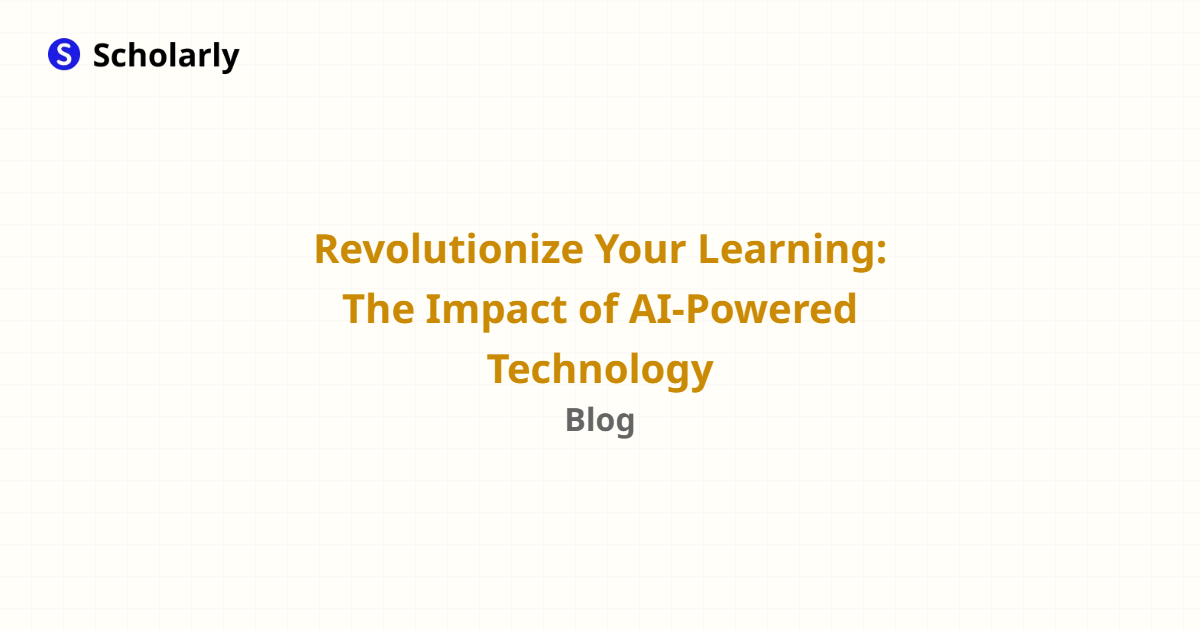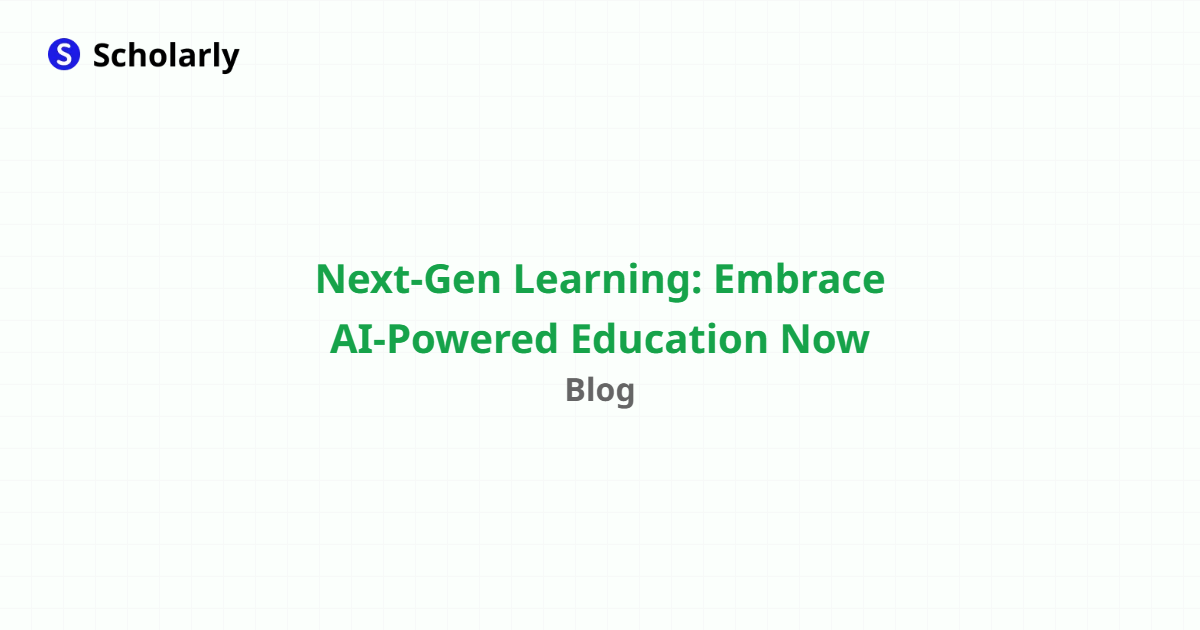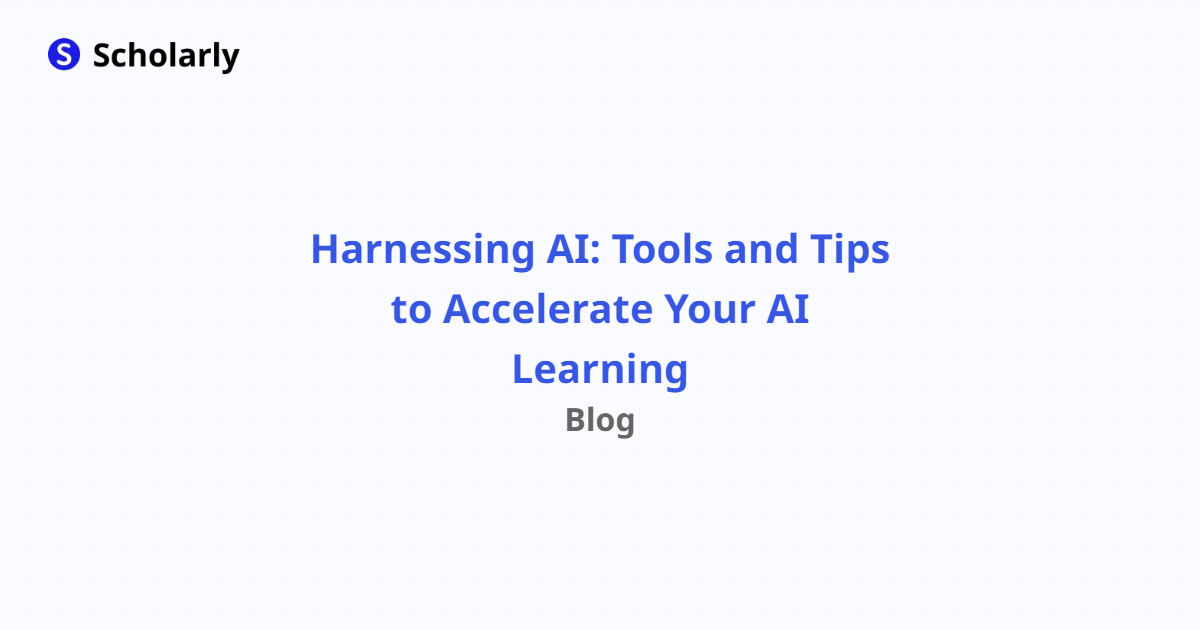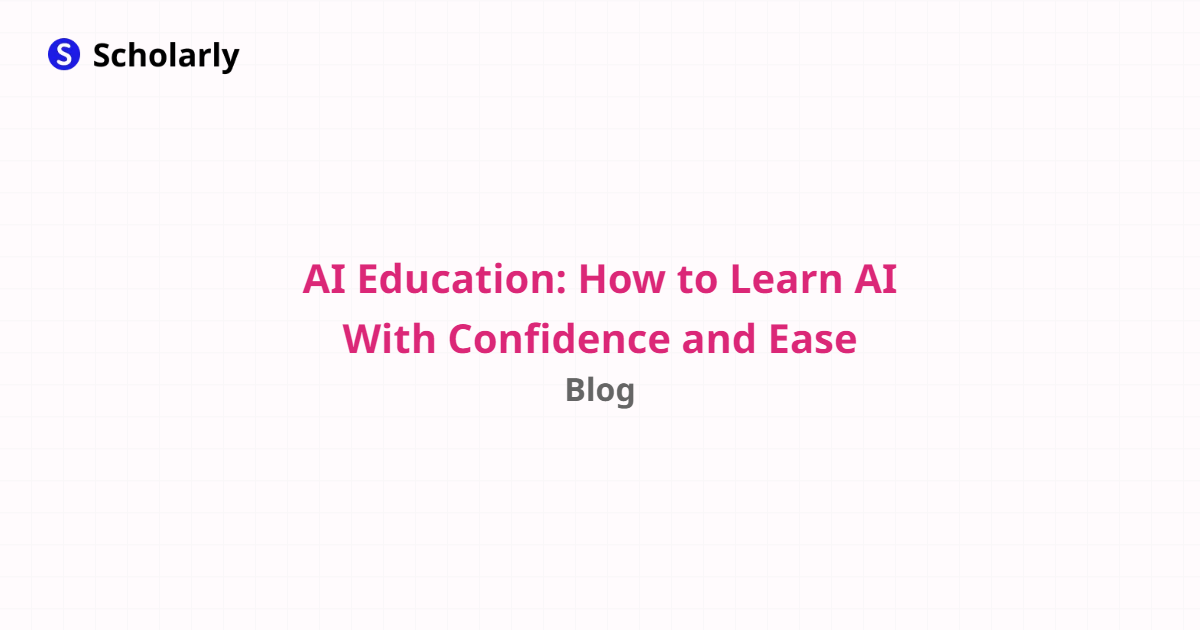Published in General
AI Advancements in School and Homework Tackling
By Scholarly
8 min read
Introduction
In recent years, artificial intelligence (AI) has made significant advancements in various industries, and the field of education is no exception. AI is revolutionizing the way students learn, comprehend information, and tackle homework. This article explores the history, current state, and future potential of AI in education. Additionally, it delves into the benefits, best practices, and challenges associated with AI in schools.
History
Past State
In the past, traditional teaching methods heavily relied on textbooks, lectures, and teacher-led instruction. Students had limited access to personalized learning and struggled with time-consuming homework tasks.
Current State
Today, AI technology has transformed the education landscape. Adaptive learning algorithms, virtual tutors, and intelligent tutoring systems are widely used in schools. These AI-powered tools provide tailored learning experiences, personalized feedback, and real-time assessment to enhance student performance.
Future State
The future holds immense potential for AI in education. As technology continues to advance, AI will become more integrated into the learning process. Predictive analytics and natural language processing will enable intelligent virtual assistants to support students in real-time. AI-driven educational platforms will be designed to facilitate collaboration and critical thinking skills.
Benefits
Personalized Learning: AI algorithms adapt learning materials to match individual students' needs and preferences, optimizing learning outcomes.
Enhanced Engagement: AI-powered tools gamify the learning experience, increasing student motivation and participation.
Real-time Feedback: AI systems can provide instant feedback on assignments and identify areas where students need improvement.
Efficient Homework Management: AI tools automate administrative tasks, allowing teachers to focus on personalized instruction and support.
Accessibility and Inclusion: AI technology can assist students with disabilities by providing tailored learning resources and support.
Significance
The application of AI in education holds significant importance. It enables personalized and adaptive learning experiences, bridging the gaps between students with diverse abilities and learning styles. AI-powered tools can enhance student engagement, accelerate learning, and improve overall academic achievement. Moreover, AI in education allows teachers to leverage technology to provide individualized support, freeing up time for more impactful instruction.
Best Practices
To maximize the benefits of AI in education, educators can follow these best practices:
Select Appropriate AI Tools: Choose AI-powered tools that align with the learning objectives and needs of students.
Integrate AI Seamlessly: Ensure that AI technology is seamlessly integrated into the classroom environment to avoid disrupting the learning process.
Train Teachers: Provide professional development opportunities for teachers to effectively utilize AI tools and leverage their potential.
Monitor Student Progress: Continuously monitor student progress using AI-based analytics to identify areas of improvement and adjust instructional strategies.
Promote Ethical Use: Establish guidelines for the ethical use of AI technology in education, ensuring student privacy and data protection.
Pros and Cons
Pros
Personalized Learning: AI provides individualized instruction based on student needs.
Adaptive Feedback: AI systems offer real-time feedback and identify areas of improvement.
Efficient Administrative Tasks: AI automates administrative tasks, saving teachers time.
Accessibility: AI technology facilitates inclusive education by providing tailored resources for students with disabilities.
Gamified Learning: AI-powered tools gamify the learning experience, increasing student motivation.
Cons
Costly Implementation: Integrating AI in schools can be financially burdensome.
Limited Personal Connection: AI lacks the human touch and personalized interaction that some students may benefit from.
Potential Bias: AI algorithms must be carefully designed to avoid biases that may negatively impact students.
Data Privacy Concerns: The use of AI technology raises concerns about student data privacy and security.
Dependence on Technology: Overreliance on AI may hinder students' development of essential cognitive and critical thinking skills.
Comparison
Several AI-powered tools transform the way students tackle homework. Here are some notable examples:
Brainly
Brainly is an online learning platform that harnesses AI to connect students with peer tutors. It facilitates collaborative learning and enables students to ask and answer homework questions in real-time. Visit Brainly
Socratic
Socratic is an AI-powered mobile app that provides instant answers and explanations for homework questions. It uses computer vision and natural language processing to assist students in various subjects. Visit Socratic
Grammarly
Grammarly employs AI algorithms to enhance students' writing skills. It offers real-time grammar and spelling suggestions, writing clarity improvements, and plagiarism detection. Visit Grammarly
Photomath
Photomath is an AI-powered app that solves math problems simply by scanning them with a smartphone camera. It provides step-by-step explanations and additional learning resources. Visit Photomath
Quizlet
Quizlet uses AI to create customized study materials and flashcards to help students review and memorize information effectively. It offers interactive learning games and study modes. Visit Quizlet
Methods
1. Intelligent Tutoring Systems
Intelligent Tutoring Systems (ITS) use AI algorithms to provide personalized instruction, feedback, and support to students. ITS adapt learning materials and strategies based on individual performance, tailoring the learning experience to students' needs.
2. Natural Language Processing
AI-powered chatbots and virtual assistants equipped with natural language processing capabilities can interact with students, answer questions, and provide guidance. These systems can understand and respond to students' queries in real-time.
3. Data Analytics
AI-based data analytics tools analyze and interpret vast amounts of student data, providing insights on performance patterns, learning gaps, and areas of improvement. Teachers can leverage these analytics to inform their instructional strategies.
4. Adaptive Learning Platforms
Adaptive learning platforms use AI to deliver personalized learning experiences. These platforms assess students' performance, identify knowledge gaps, and provide customized recommendations and resources.
5. Gamification
AI-powered gamification elements can enhance student engagement and motivation. Gamified learning platforms leverage AI algorithms to create interactive and immersive experiences that make learning more enjoyable and interactive.
AI Impact
AI has the potential to transform education in numerous ways. Some key impacts include:
AI Applications
- Virtual learning environments
- Intelligent virtual tutors
- Adaptive learning platforms
AI Techniques
- Natural language processing
- Predictive analytics
- Machine learning
AI Benefits
- Personalized instruction
- Enhanced engagement
- Real-time assessment and feedback
AI Challenges
- Ethical considerations in AI use
- Teacher training and adoption
- Data privacy and security
AI Potential Online Apps that Relate to the Topic
- Coursera
- Udacity
- Khan Academy
- edX
- Duolingo
Conclusion
In conclusion, AI advancements in education have the potential to revolutionize how students learn and tackle homework. Personalized learning, enhanced engagement, and efficient homework management are just a few of the benefits AI brings to the education sector. While AI presents challenges, careful implementation and ethical use can ensure its positive impact on education. As technology continues to advance, AI will play an increasingly significant role in shaping the future of education.




